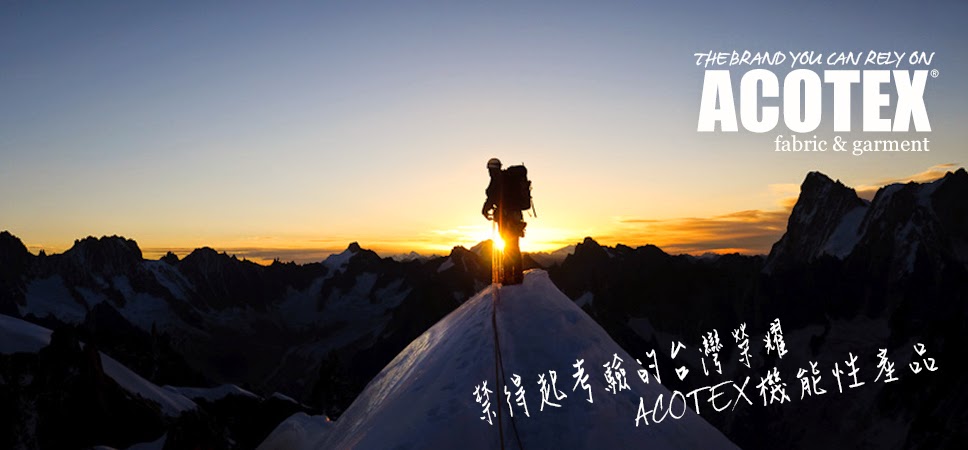
如何挑選帳篷材質?
刮風、下雨、寒冷、昆蟲、沙塵等野外可能會遇到的狀況。如果有人問你為什麼到郊外露營需要帶帳篷,上列幾項是很好的理由。在曠野中,帳篷提供了一個不受干擾的地方,而且一旦關上帳篷後,在心理上也有無形的安全感。所以在挑選帳棚時,消費者經常會問,如何挑選帳棚的材質?何種材料才是製作帳篷最好的布料材質呢?
選購帳篷材質的重點
在挑選帳篷布料材質時,不外乎有幾項重點:輕巧、防水、透氣、耐磨和抗紫外線等。一般市面上帳篷的布料原料的選用多半為尼龍(Nylon)、聚氨酯(Polyurethane)或聚酯纖維(Polyester)等人造纖維材質。一般來說,防水透氣功能優越的帳篷通常是雙層帳篷,即同時具有外帳和內帳的帳篷,外帳起防水作用(防水能力越強越好),內帳起透氣作用,讓人體呼出及散發的氣體排出帳篷。當然,在帳篷的布料材質上,製作工法的細膩度也是關鍵,像是接縫車縫線等等。
依照上面挑選帳篷的重點,下面來了解一下各種帳篷的布料:
- 尼龍(Nylon): 張力強,色澤鮮豔光滑,不易褪色,且質地柔軟,又具有良好的強度,不易發黴,也不會蟲蛀,吸濕性小,遇凍不硬化,是目前使用最廣的質料。尤其是丹尼數較小的尼龍,質地更加柔軟光滑。
- 牛津布: 是一種尼龍仿棉織物,質地柔軟光滑且耐磨,通常用作帳底。
- 滌塔夫: 具備良好的透氣性,且有一定的保溫能力,通常用做內帳材質居多。
- 帆布: 防水性強,隔熱效果較好,太陽照射時不易炙熱,但質地較硬且重量較重,會受潮吸水且容易發黴及褪色,經濟效益已不如尼龍。
- TC布: 所謂TC布就是T(俗稱特多龍tetoron)與C(俗稱cotton)混紡的布料,系在經紗部份織以特多龍,緯紗部份織以棉紗而合成為TC布,故兼具了兩者的特性,耐磨,耐用強度佳,透氣性好質地結實,多用於中大型的家庭帳篷。
- 絲芙綢: 系尼龍與Rayon混紡的布料,因此合成以後具有尼龍與Rayon的特性,布面光滑,透氣性佳,但耐用度及強度不如純尼龍來得好,多用於大陸型的寒冷氣候裏,如在寒冷的天氣下關緊營門的同時也必須能夠散發帳內的水蒸氣,才不致於太悶或濕度太重,因此必須重用到本布料。
- CORETEX: 是美國新科技下的產物,它能夠透氣,又能夠防水、重量輕、耐磨、耐用。只是價格成本較昂貴。
為什麼不用GORE-TEX或類似的防水透氣布料材料做帳篷?
相信這是很多人會問的問題,GORE-TEX的防水能力達到20000mm,且具備透氣性,可以因此省略內帳,減輕帳篷重量,豈不是很好嗎?
但是GORE-TEX材料的帳篷至今只有寥寥幾款,有人認為是出於防火的考慮,但實際上幾乎所有的帳篷尼龍都是極易燃燒的。是出於成本嗎?對於花費動輒數十萬美圓計的專業登山隊來說,一頂幾千美圓的帳篷也不算太貴。
某戶外品牌的創始人曾經發表過他的親身經歷,當他帶著自己設計製作的GORE-TEX帳篷在喀什米爾地區旅行時,早晨醒來發現自己幾乎睡在冰窟裏,結霜過於嚴重,GORE-TEX材料或這類的高防水布料的確可以有效排出人身體排出的濕氣,但不要忘了,通過嘴巴和鼻子排出的濕氣要遠遠超過身體所排出的,GORE-TEX或是這類的高防水布料的透氣透濕速率還遠遠達不到要求,這正是只有GORE-TEX服裝而沒有GORE-TEX帳篷的根本原因。
當然出於極端的考慮,一些高山單層帳採用了防水透氣的Epic、CONDUIT、ToddTex等材料,也是為了因應極度惡劣環境不得已的選擇。
What is the best tent material?
This know-how chapter will help you understand the characteristics of tent fabrics and help decide upon the best tent material for your camping or tenting situation. The best tent fabric will be light and durable, water resistant and breathable.
Regardless of fabric, tent seams should be double-stitched and reinforced at key stress points.
Nylon
Nylon is an excellent tent fabric because it is strong and durable. At the same time, it is lightweight and easily waterproofed.
Uncoated nylon is water-resistant, but not waterproof, because water can pass through gaps between the woven fibres. To prevent that, nylon material is coated in large spools with polyurethane. The polyurethane coating seals out most water, making nylon tents weatherproof. It effectively seals the material, but it also greatly reduces the breathability of the fabric.
Many smaller tents also have floors made of treated, thus water-resistant nylon. However, a waterproof barrier of some type (i.e. polyethylene or vinyl tarps) should be placed under nylon floor tents.
Rip-Stop Nylon
Rip-stop nylon has the same characteristics as regular nylon. The one main addition is a heavier fibre woven into the fabric every dozen or so stitches. The idea is that if a tear starts, the resistance that the heavier fibre provides will stop the rip sooner. Rip-stop nylon is recognizable by its obvious grid pattern on the fabric.
Nylon is the most popular and widely used tent fabric. It is durable and lightweight, resists tearing and naturally sheds water.
Choose a nylon tent if you are a summer, winter or three-season camper who is hiking or biking and needs a lightweight tent that can be pitched and taken down on a daily basis.
Polyester
The qualities of polyester are nearly identical to nylon, but resists UV exposure better than nylon. However, it can tend to be heavy.
Choose a polyester tent fabric if you’re setting up in a campground where you are planning to stay for a longer period.
編排整理 Edited: ACOTEX Fabric Talks 布料指南

0 Comments:
張貼留言